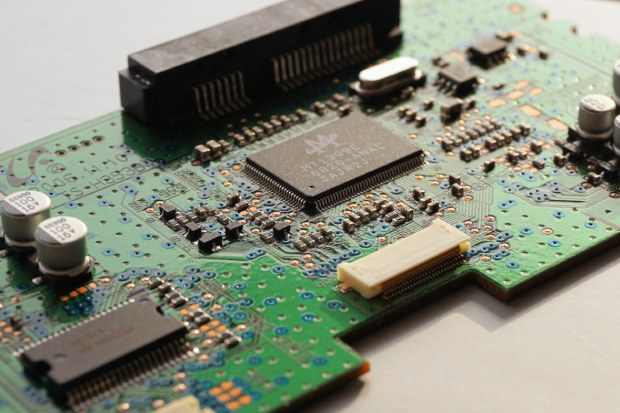
As businesses increasingly rely on technology to improve important functions and speed up key processes, the need for quick, flexible and responsive technical solutions has also increased.
Production equipment has made it possible to provide these solutions and in this guide, we’re going to look in more detail at printed circuit boards and how SMT is being used to streamline the assembly process.
Read on to find out more about SMT (Surface Mount Technology) assembly procedures and why this is becoming such a popular trend amongst businesses, especially those in the manufacturing industry.
What is surface mount technology?
SMT is an assembly method that is used to apply electronic components to the surface of a printed circuit board (PCB). Essentially, the components are soldered straight onto the circuit board, rather than being inserted through holes like in more traditional assembly methods.
This technique is nothing new. In fact, it was invented back in the 1960s by IBM as a way of building small-scale computers. However, back then it was known as Planar Mounting. Although not used by many companies at that time, this technique sky-rocketed in popularity in the 1990s as surface-mounted devices became more widely used.
What are the benefits of SMT?
There are loads of reasons to choose SMT assembly methods, but if you’re not sure whether this is the best technique for your business, you should consider the following benefits:
- It reduces the amount of electricity used and the overall cost of manufacturing goods as the components are attached directly to the board and fewer holes need to be drilled
- The process can be completed by automated production tools so requires far less human intervention. This is another way to save the business money and reduce the risk of an error
- The space on PCBs is used more effectively, which means smaller, more sensitive components can be attached
- There is the capability to produce higher volumes of goods as it is faster and simpler to assemble products
- This process can increase the total output of goods and in turn, reduce the cost per unit
The SMT assembly process
Another way to determine whether this might be the ideal method for your business is to understand the actual assembly process in more detail. Below, we’ll break it down into the six key stages.
1. Adding solder paste
The first stage of the manufacturing process relies on a machine that will place solder paste onto the printed circuit board using a stencil to ensure it is always in the right place.
2. Chip mounting
After the solder paste is added, the board moves down the assembly line to the chip mounter. Here, design files ensure that all components are placed in the corresponding positions on the PCB.
3. Reflow soldering
During the next stage, the solder paste is melted, making any components or devices stick to the PCB. The solder paste is then cooled down. This part of the process takes place in a reflow soldering oven.
4. Cleaning the boards
Now the item has been assembled, it must be cleaned to ensure that no hazardous residue has been left on the board. These residues can be produced by flux during the reflow soldering stage.
This cleaning process can be implemented on the SMT assembly line or it can be done off the line too. Either way, it is important that these boards are cleaned properly.
5. Inspecting the boards
Next, it’s time to inspect the boards to make sure the soldering and assembly are high-quality and that all manufacturing standards and regulations have been met.
Tools such as magnifying lenses, microscopes, ICTs (In-circuit Tester), AOIs (Automated Optical Inspection), X-ray inspections and more will be used at this point to make sure the products are up to scratch.
6. Reworking defects
The final stage takes place after the inspection and any PCBs that have defects are sent back to be reworked. To do this, the relevant equipment and tools, such as electric soldering irons, must be used. This will once again be inspected to make sure it is fixed and up to standard.
When should you choose SMT assembly?
Just in case you’re still feeling unsure, you should choose SMT assembly techniques when creating products that are smaller and lightweight. That’s because this is a simple assembly method, but one that can meet complex electronic requirements and create powerful devices.
You should also choose this method if you want to cut costs and if you have tiny, sensitive components that need to be carefully attached to the PCB.
Activate Social Media:


